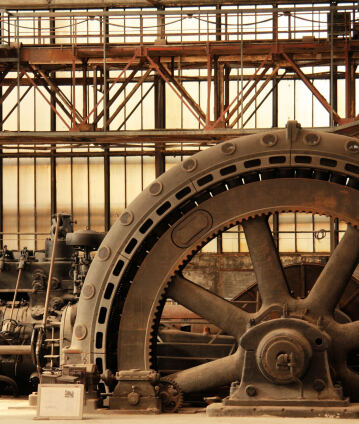“Unanswered Questions”: Musical Modernism between 1910 and 1920

The decade between 1910 and 1920 saw the First World War and the Russian Revolution. During the same period, dramatic upheavals also occurred in the world of European music: these were the years of the last works of Mahler and Debussy, of free atonality in the Second Viennese School headed by Schoenberg, of the scandalous premiere of Stravinsky’s Le Sacre du printemps and of experimental compositions by outsiders such as Leoš Janáček and Alexander Scriabin. Our playlist presents this exciting repertoire in performances by the Berliner Philharmoniker.
The period between 1910 and 1920 can be counted as a particularly productive period in recent music history. Although most of the composers presented here were rather apolitical, their works also reacted to the historical upheavals of the time. In Ravel’s La Valse, premiered in 1920, the aftermath of the upheaval caused by the First World War can be plainly heard. One such victim was the composer Rudi Stephan, who died at the age of 28 and whose Music for Orchestra is conducted here by Kirill Petrenko.
Debussy, Scriabin and Mahler who also died in the decade mentioned above, advanced into new spheres of expression in their farewell works: the adagio of Mahler’s Tenth Symphony, which remains a fragment, contains a chord in which nine notes of the chromatic scale are heard simultaneously. In Jeux, Debussy achieved a maximum of freedom in terms of form, instrumentation and harmony. Finally, in Prométhée ou Le Poème du feu, Scriabin used a piano that was intended to produce colour rather than sound. For other composers, the 1910s were a time of new beginnings: Schoenberg and his students provoked the audience with compositions whose “free atonality” emancipated them from the basics of familiar harmonies, and the proverbial thunderbolt would be a far too harmless metaphor for the shock that Stravinsky’s ballet music Le Sacre du printemps caused at its premiere in 1913. Finally, Béla Bartók, one of the most important and forthright composers of the era, completed his only opera Bluebeard’s Castle in 1911.
The great Modernist composers often regarded each other as competitors. However, with Schoenberg’s Pierrot lunaire there was a work that intrigued many colleagues: Ravel praised the combination of “Romanticism” and “sobriety”, Stravinsky described the instrumentation as “perfect”, and Edgard Varèse drew Debussy’s attention to the piece he admired. Schoenberg’s mysterious and expressive Sprechgesang in three parts therefore form the leitmotif of this selection.
With Charles Ives’s The Unanswered Question and Varèse’s Amériques – as prologue and epilogue – the playlist also presents two compositions written shortly before and after this exciting decade. Ives was undoubtedly one of the early authentic voices of American music; Varèse moved from Europe to the USA at the time of his first major composition. And the emigrants Stravinsky, Schoenberg and Bartók also found their last home there.